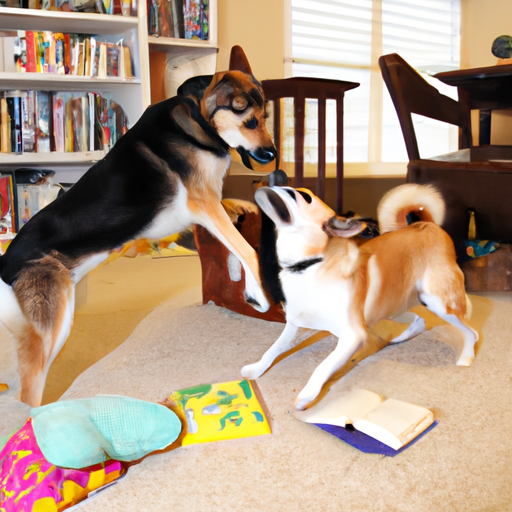Introduction
Sometimes, like people, dogs may not get along. Whether you’re blending households, adopting a new furry friend, or simply having a playdate, it’s important to understand how to make dogs get along. In this guide, we’ll explore meaningful steps that can help your dogs become fast friends, or at least learn to coexist peacefully.
Understanding Dog Behavior
Understanding dog behavior is crucial when helping dogs get along. Dogs communicate differently than humans and recognizing their signals can assist in preventing disagreements.
- Body Language: Dogs use their body to express their feelings. A relaxed body means a happy dog, while a stiff body could indicate discomfort or aggression.
- Growling and Snarling: Dogs growl or snarl when they’re uncomfortable or scared. Don’t punish your dog for these signals; they’re trying to communicate something important.
- Avoidance: If a dog is uncomfortable, they might try to avoid the situation or the other dog.
When you understand these signals, you can intervene before a situation escalates.
Introducing Dogs to Each Other
When introducing dogs to each other, it’s important to take it slow and keep the environment neutral. Here’s a step-by-step guide:
- Initial Meeting: Arrange a meeting in a neutral location. Have a friend or family member bring the other dog. Start by walking parallel to each other at a safe distance, gradually decreasing the gap.
- Body Language: Watch their body language. If both dogs are relaxed, allow them to sniff each other. If any dog shows aggression, separate them and try again later.
- Home Introduction: If the meeting goes well, bring the dogs home. Let the new dog explore the home with the resident dog outside, then switch.
Remember, patience is key. It might take a few meetings before your dogs feel comfortable with each other.
Creating a Harmonious Environment
To ensure your dogs get along, you need to create a harmonious environment at home.
- Establish Rules: Consistency in rules and schedule makes dogs feel secure.
- Provide Personal Space: Each dog should have their own bed, food and water bowls, and toys.
- Positive Reinforcement: Reward good behavior with treats and praise.
- Exercise: Regular exercise can help reduce aggression and nervousness.
| Important Elements | Why It’s Important |
|---|---|
| Consistency | Provides a sense of security |
| Personal Space | Reduces resource guarding |
| Positive Reinforcement | Encourages good behavior |
| Exercise | Reduces aggression and nervous energy |
Seeking Professional Help
Sometimes, despite your best efforts, dogs may not get along. In such situations, don’t hesitate to seek professional help. A professional dog trainer or behaviorist can provide valuable insights and guidance.
FAQ
Q: How long does it take for dogs to get along?
A: This varies from dog to dog. It can take anywhere from a few days to a few months.
Q: What if my dogs fight?
A: If your dogs fight, separate them immediately. Seek professional help if fights are recurring or severe.
Q: Can all dogs get along?
A: Most dogs can learn to tolerate each other, but some dogs may never become best friends. That’s okay as long as they can coexist peacefully.
Remember, understanding, patience, and love are the most important aspects when helping dogs get along. Happy parenting!



